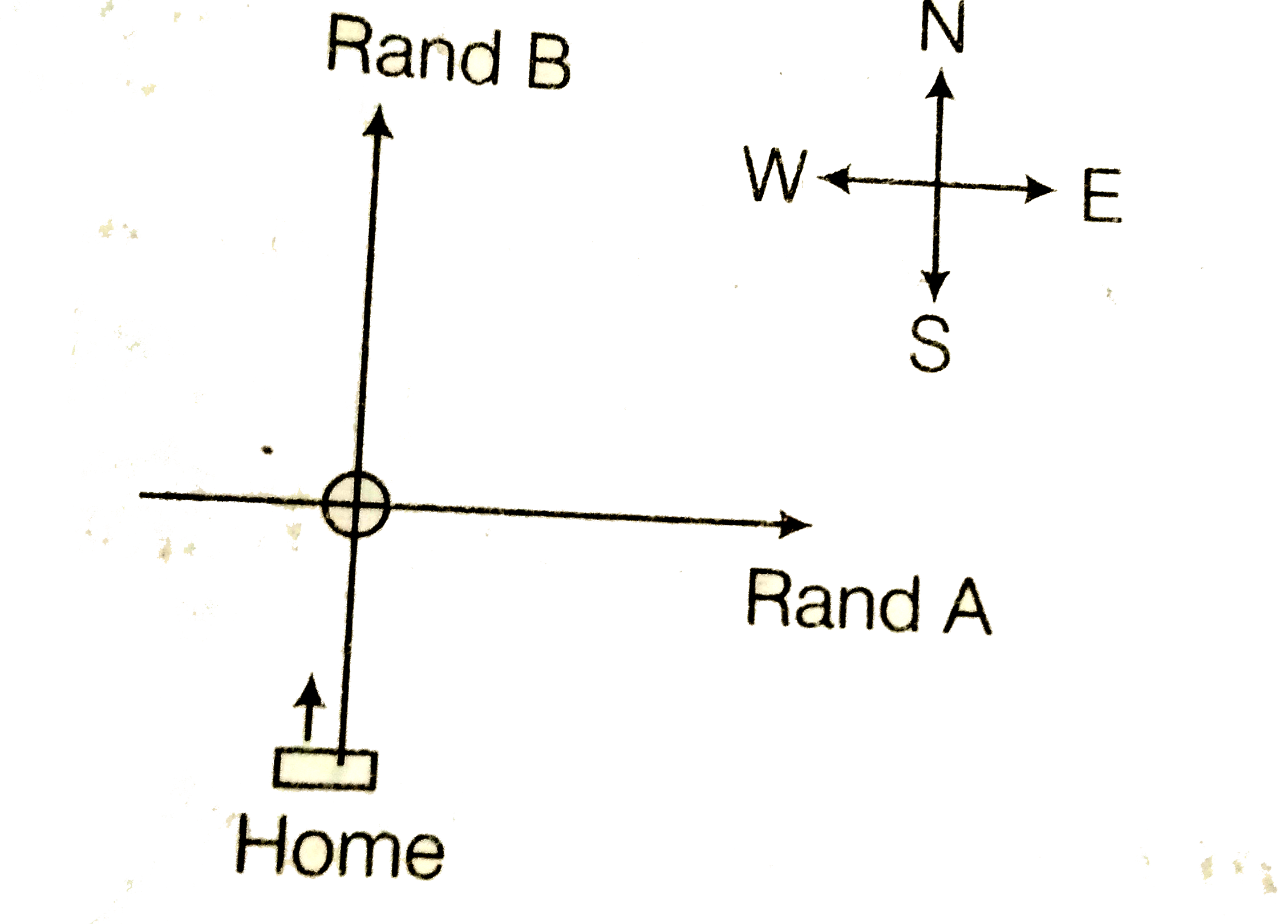A man leaves his home early in the morning to have a walk. He arrives at a junction of roads A and B as shown in figure. He takes the following steps in later journies :

(i) 1 km in North direction.
(ii) Changes direction and moves in North-East direction for 2√2 km.
(iii) Changes direction and moves Southwards for distance of 2 km.
(iv) Finally he changes the direction and moves in South-East direction to reach road A again.
Visible/invisible path The path traced by the man in the direction parallel to road A and road B is called invisible path, the remaining path is called visible.
Visible points The point about which the man changes direction are called visible points, except the point from where he changes direction last time.
Now if roads A and B are taken as X-asix and Y-axis, then visible point representing the graph of y = f(x).
If f(x) is periodic with period 3, then f(19) is
0
1
2
3
The correct Answer is:B, C
Step by step video & image solution for A man leaves his home early in the morning to have a walk. He arrives at a junction of roads A and B as shown in figure. He takes the following steps in later journies : (i) 1 km in North direction. (ii) Changes direction and moves in North-East direction for 2 sqrt(2) km. (iii) Changes direction and moves Southwards for distance of 2 km. (iv) Finally he changes the direction and moves in South-East direction to reach road A again. Visible/invisible path The path traced by the man in the direction parallel to road A and road B is called invisible path, the remaining path is called visible. Visible points The point about which the man changes direction are called visible points, except the point from where he changes direction last time. Now if roads A and B are taken as X-asix and Y-axis, then visible point representing the graph of y = f(x). If f(x) is periodic with period 3, then f(19) is by Maths experts to help you in doubts & scoring excellent marks in Class 12 exams.
Updated on:21/07/2023Topper's Solved these Questions
- CONTINUITY AND DIFFERENTIABILITYBOOK - ARIHANT MATHS ENGLISHCHAPTER - CONTINUITY AND DIFFERENTIABILITYEXERCISE - Exercise (Passage Based Questions)
16 Videos
- CONTINUITY AND DIFFERENTIABILITYBOOK - ARIHANT MATHS ENGLISHCHAPTER - CONTINUITY AND DIFFERENTIABILITYEXERCISE - EXERCISE 5
3 Videos
- CONTINUITY AND DIFFERENTIABILITYBOOK - ARIHANT MATHS ENGLISHCHAPTER - CONTINUITY AND DIFFERENTIABILITYEXERCISE - Exercise (Statement I And Ii Type Questions)
11 Videos
- COMPLEX NUMBERSBOOK - ARIHANT MATHS ENGLISHCHAPTER - COMPLEX NUMBERSEXERCISE - Complex Number Exercise 8
2 Videos
- COORDINATE SYSTEM AND COORDINATES BOOK - ARIHANT MATHS ENGLISHCHAPTER - COORDINATE SYSTEM AND COORDINATES EXERCISE - Exercise (Questions Asked In Previous 13 Years Exam)
7 Videos
Similar Questions
A car is moving in east direction. It takes a right turn and moves along south direction without change in its speed. What is the direction of average acceleration of the car?
View SolutionA person moves 30 m along north direction, then moves 40 m along east direction and finally moves 20 m along south direction. Find distance & displacement
View SolutionA car moves with speed 60km/h for 1 hour in east direction and with same speed for 30 min in south direction. The displacement of car from initial posilion is
View SolutionAssertion : Acceleration of a moving particle can change its direction without any change in direction of velocity.
Reason : If the direction of change in velocity vector changes, the direction of acceleration vector also changes.
View SolutionAssertion : Acceleration of a moving particle can change its direction without any change in direction of velocity.
Reason : If the direction of change in velocity vector changes, the direction of acceleration vector also changes.
View SolutionA rod when suspended in a magnetic field stays in east-west direction. Can we be sure that the field is in the east-west direction? Can it be in the north-south direction?
View SolutionA man going east in a car with a velocity of 20 km/hr, a train appears to him to move towards north with a velocity of 20√3 km/hr. What is the actual velocity and direction of motion of train?
View SolutionA man moves 4 m along east direction, then 3m along north direction, after that he climbs up a pole a height 12m. Find the distance covered by him and his displacement.
View SolutionState the kind of angle, in each case, formed between the following directions: (i)East and west (ii) East and north (iii)North and north-east (iv) North and south-east
View SolutionA particle moves in the direction of east for 2s with velocity of 15ms−1. Then it moves towards north for 8s with a a velocity of 5ms−1. The average velocity of the particle is
View Solution
